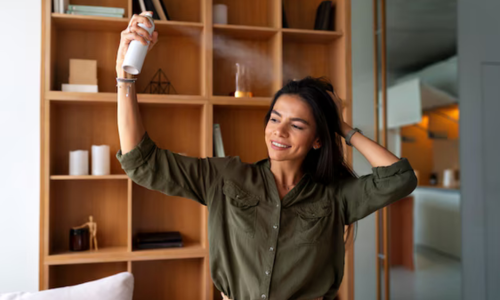Notifications
5 minutes, 47 seconds
-64 Views 0 Comments 0 Likes 0 Reviews

The air you breathe inside your home impacts your health more than you realize. With pollution and allergens sneaking in daily, the need for fresh, clean air has never been greater. That’s where the best home air purifier becomes your secret weapon—silently working to remove invisible threats and create a space where you can truly breathe easy.
Here’s how you can optimize your air purifier’s performance and create a healthier living environment.
1. Position Your Air Purifier Correctly
The placement of your air purifier determines its effectiveness. To ensure optimal air circulation:
• Keep it in the room where you spend the most time, like the bedroom or living room.
• Avoid placing it against walls, behind furniture, or in corners where airflow is restricted.
• If you’re targeting kitchen smoke or pet dander, position the purifier closer to these sources.
2. Keep Doors and Windows Closed
Your air home purifier works best in a controlled environment. Keeping doors and windows closed prevents outdoor pollutants from continuously entering your home, allowing the purifier to clean the air more efficiently. If you need ventilation, open windows briefly but run the purifier on a higher setting afterward.
3. Run It Continuously for Best Results
Airborne pollutants accumulate throughout the day, making it essential to keep your home air purifier running consistently. Most modern purifiers are energy-efficient, so running them 24/7 at a moderate speed won’t significantly impact electricity costs but will ensure continuous air purification.
4. Change Filters on Time
The efficiency of an air home purifier heavily depends on its filters. Over time, filters become clogged with dust, pet dander, and other pollutants, reducing their effectiveness.
• HEPA filters should typically be replaced every 6–12 months.
• Carbon filters (used for odor removal) need changing every 3–6 months.
• Some models feature washable pre-filters—clean them regularly for maximum efficiency.
Ignoring filter maintenance can cause the purifier to circulate dirty air instead of cleaning it.
5. Select the Right Air Purifier for Your Needs
Not all air purifiers are created equal. Choosing the best home air purifier depends on the specific pollutants you want to target:
• For Allergies & Asthma – An UltraHEPA filter purifier will capture fine dust, pollen, bacteria, virus, and pet hair.
• For Odors & Smoke – A model with an activated carbon filter will eliminate smells and harmful gases.
• For Bacteria & Viruses – Opt for a purifier with UV-C light or antimicrobial filtration for added protection.
6. Maintain the Purifier for Longevity
Like any other appliance, your air home purifier requires routine maintenance.
• Wipe down the exterior weekly to prevent dust buildup.
• Vacuum air intake vents to maintain strong airflow.
• Check for filter replacement indicators and follow manufacturer recommendations.
7. Use Multiple Purifiers for Large Homes
If your home has multiple rooms or floors, a single air home purifier may not be enough. Consider placing units in key areas—bedrooms, living rooms, and kitchens—to ensure consistent air purification throughout your home.
Breathe Easier with the Right Air Purifier
Investing in the best home air purifier is just the first step toward healthier indoor air. By using it correctly, maintaining it well, and choosing the right model for your needs, you can significantly improve your home’s air quality and protect your family from pollutants.

